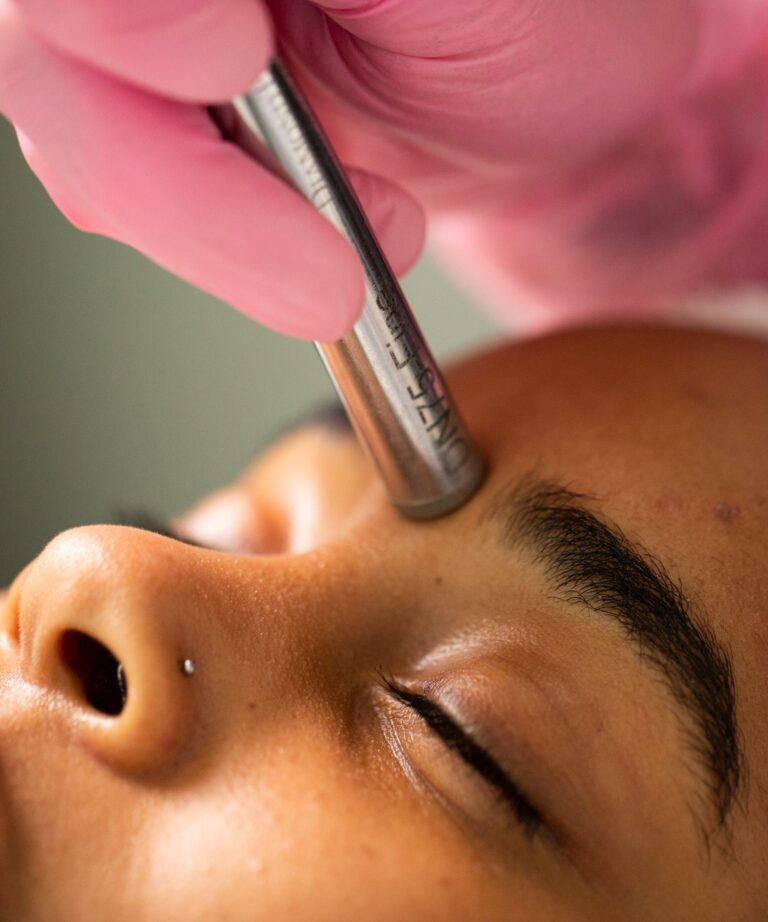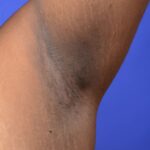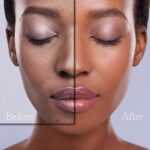Microdermabrasion is a procedure that involves a gentle abrasion of the uppermost layer of the skin, it is considered to be ‘skin polishing’. It is in a few ways similar to a chemical peel; it is also a non-surgical procedure which is suitable for any part of the body even though the face is the most common site. It is a particularly favourable procedure for a rich complexion individual as it is known to help correct a variety of skin flaws. Namely, it improves dull and leathery skin, helps to reduce mild acne scarring, it can be used to lighten blemishes and discolorations, employed to smoothen fine wrinkles, even out skin tone, and also used in reducing acne and razor bumps. Exfoliation of plugged pores and reduction in the appearance of enlarged pores are areas where this procedure has proven to be also helpful. Microdermabrasion does not stop at the removal of undesired irregularities in the skin but also aid the production of collagen in the skin. For those that cannot tolerate chemical peels, microdermabrasion is the go-to procedure.
Whenever microdermabrasion is carried out on an individual, the following occurs; a closed vacuum device is used to carefully spray aluminium oxide crystals via a tube which connects with a hand piece and then goes on to your skin. The device suctions the particles gathered from the removal of dead or damaged superficial skin. The aluminium oxide crystals carefully polish the face while the suction stimulates blood flow alongside collagen production. Often times, treatments would last for about 15-30 minutes and do not require an anaesthetic agent. As seen in various rejuvenation techniques, several treatment sessions may be required to return the skin to a desired state. Many doctors recommend a duration of treatment that lasts between 6 to 12 sessions and spread over a space of 3-4 weeks. Having undergone the initial treatments, the doctor may advise supplementary periodic “touch-up” treatments to augment obtained results. As seen in chemical peels, microdermabrasion is supplemented with topical creams and lotions to optimize results.
Microdermabrasion may be a quick and simple procedure, but this does not excuse the possibility of side effects. Some individuals may experience mild redness or red-streaking following the procedure which may ultimately develop into dark patches or brown streaks, this in itself may take several weeks before it’s resolve. In addition, mild irritation and dryness may occur following the procedure.
The unsatisfactory results obtain from surgical procedures have nudged many towards the direction of minor to non-surgical procedures. Microdermabrasion and chemical peels require next to no recovery time. They are generally more appealing to women facing severe skin pigmentation among other skin problems. These procedures however aren’t devoid of their risks, it is therefore imperative to review all options with a dermatologist prior to a final decision on your skin care pursuits.
Microdermabrasion and Chemical Peel Kits for home use.
The use of at-home chemical peel and microdermabrasion kit in recent years has been on the rise, these can be classified as the modified versions of ones used in the office, consequently the results obtained may differ. The kit designed for home use do not come with a suction device but comes with crystals that are applied manually to achieve exfoliation of dead skin. Routinely, the kits for home use come with a sponge or a battery-operated applicator, this is used to exfoliate the skin. It is important to take caution while using this as some of the crystals can be very abrasive.
Microdermabrasion as established is one of the effective procedures used to manage the adverse effects of the UV light, the use of at-home kits may be a temporal option but it is not a replacement for an in-office procedure prescribed by a physician.
Many concerns are raised as regard the at-home kit which primarily borders on areas of safety and efficacy. Generally, the at-home kits have their limitations in that they can only give desired results to a reasonable extent but not optimal. They are not designed to replace the in-office procedures; therefore, they cannot replicate the results. The limited efficacy however does not stop it from posing the risk of side effects as seen in the in-office treatment. These can vary from skin irritation, allergic reactions, redness to skin discolorations. Consult with the dermatologist before making a decision and adhere to instructions given by the manufacturers.
After a microdermabrasion, protecting the new skin that appears should be a priority. Exposure to excess sun rays can affect the skin and affect the efficacy of the procedure. The use of a a sunscreen can help you reduce the effect of sun exposure on skin after a microdermabrasion.



